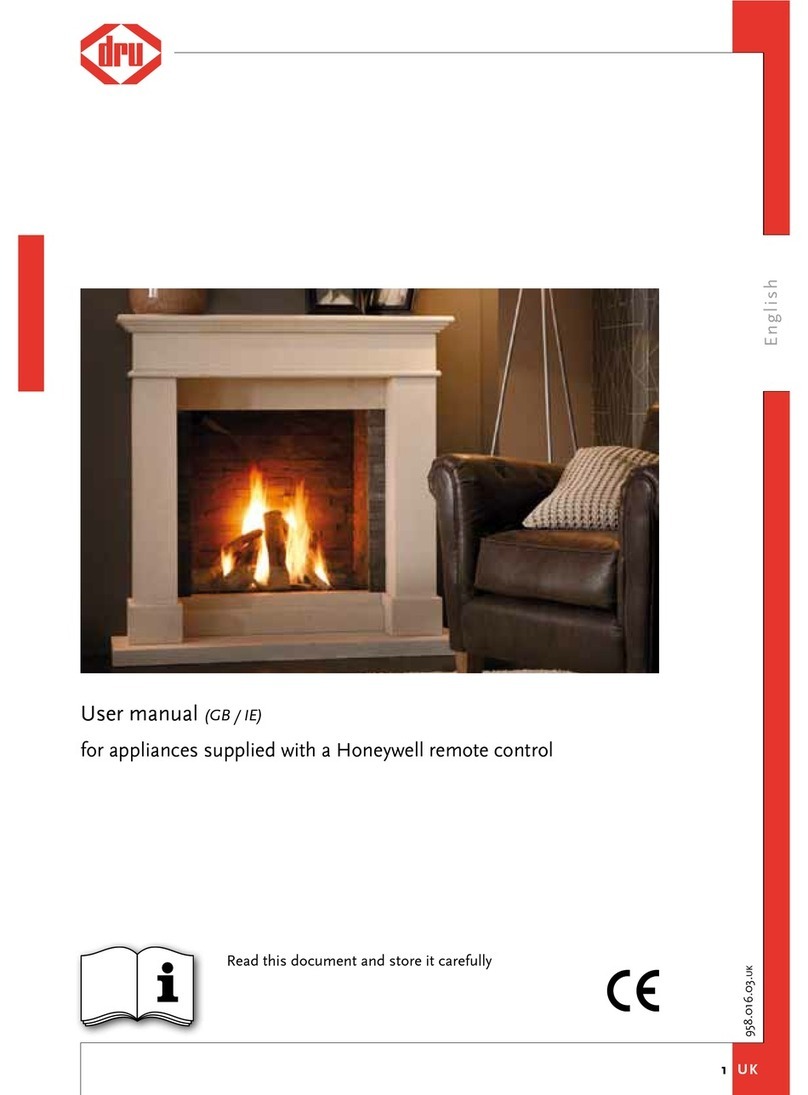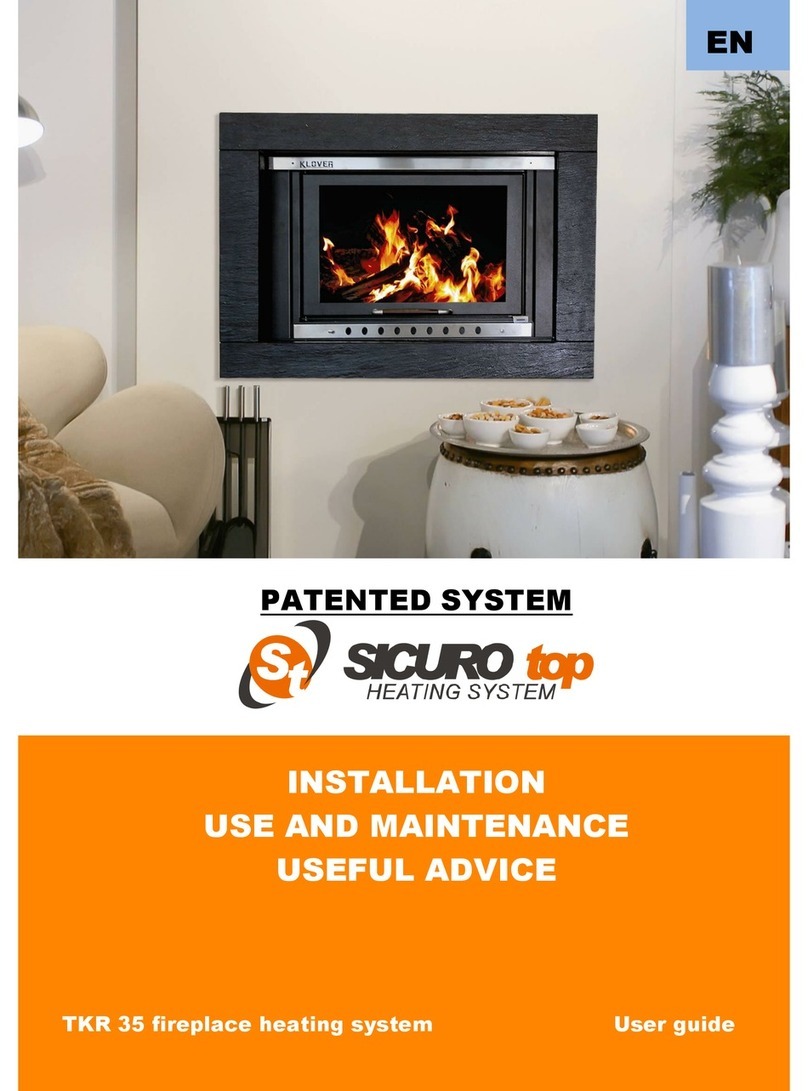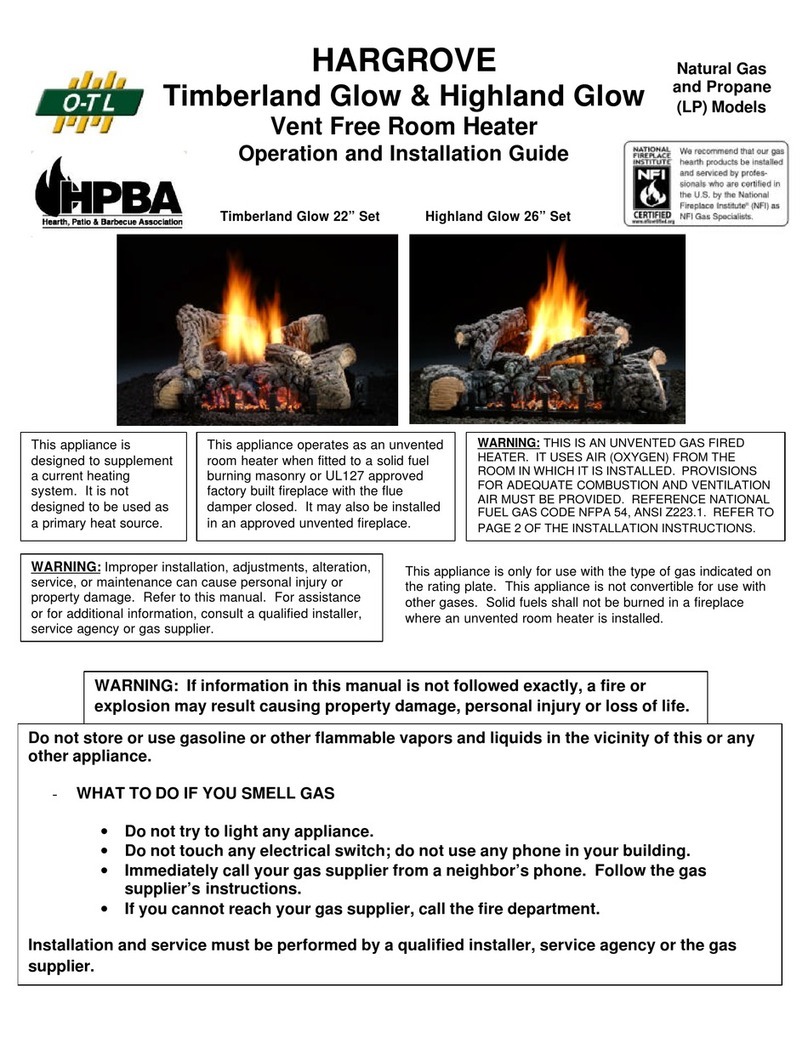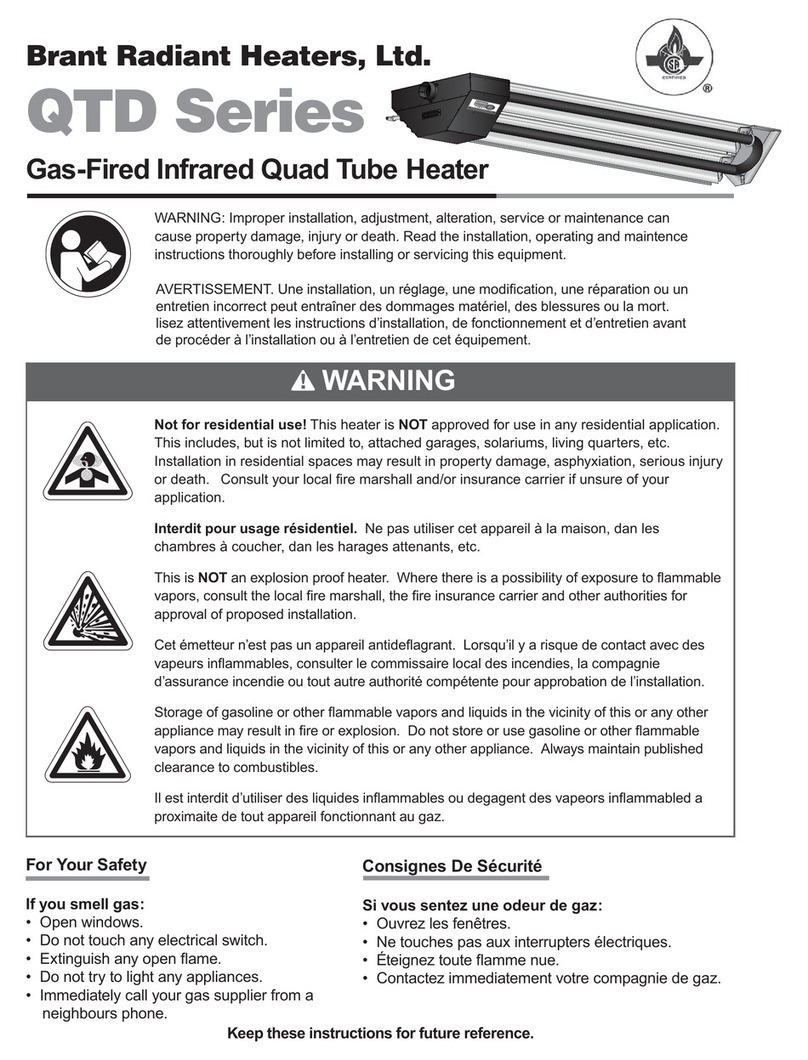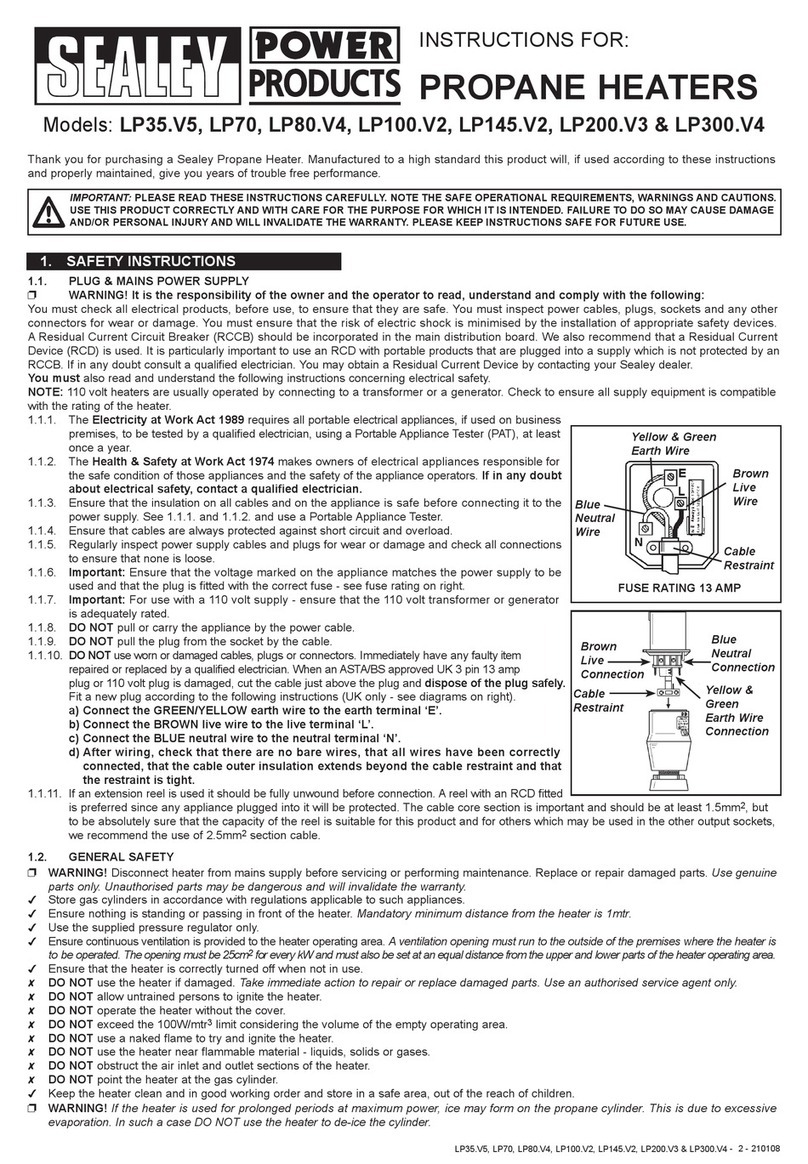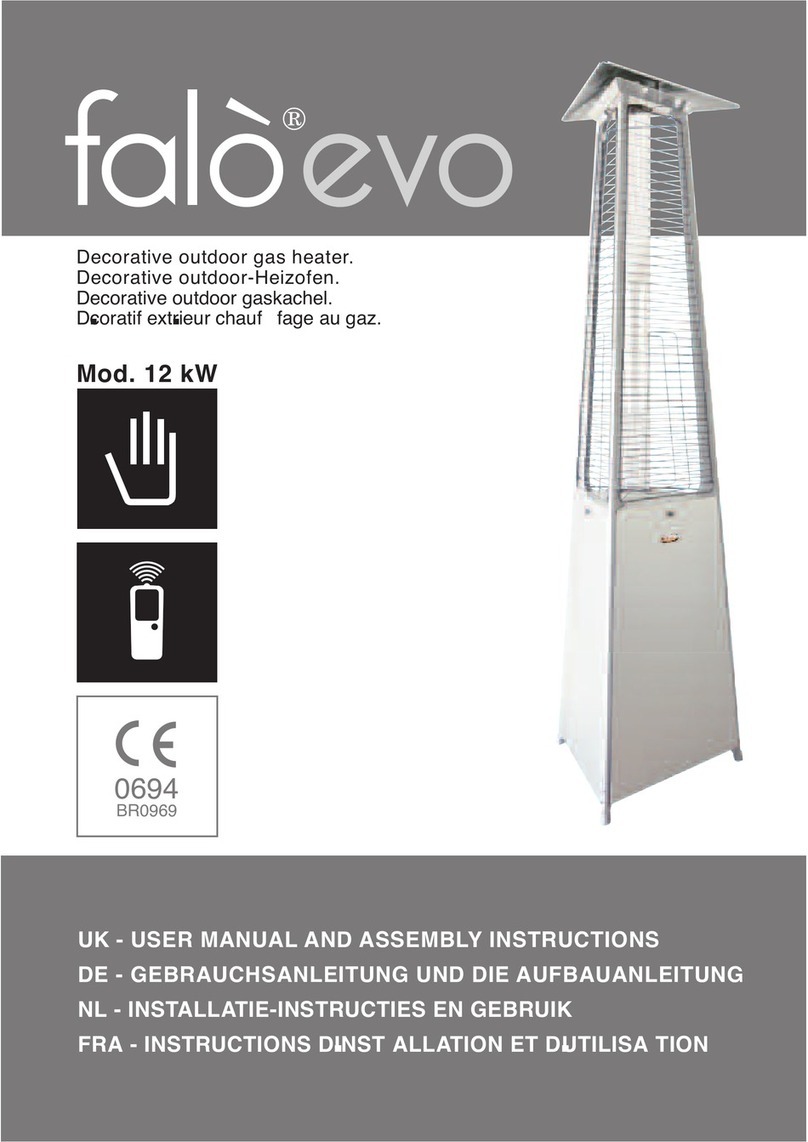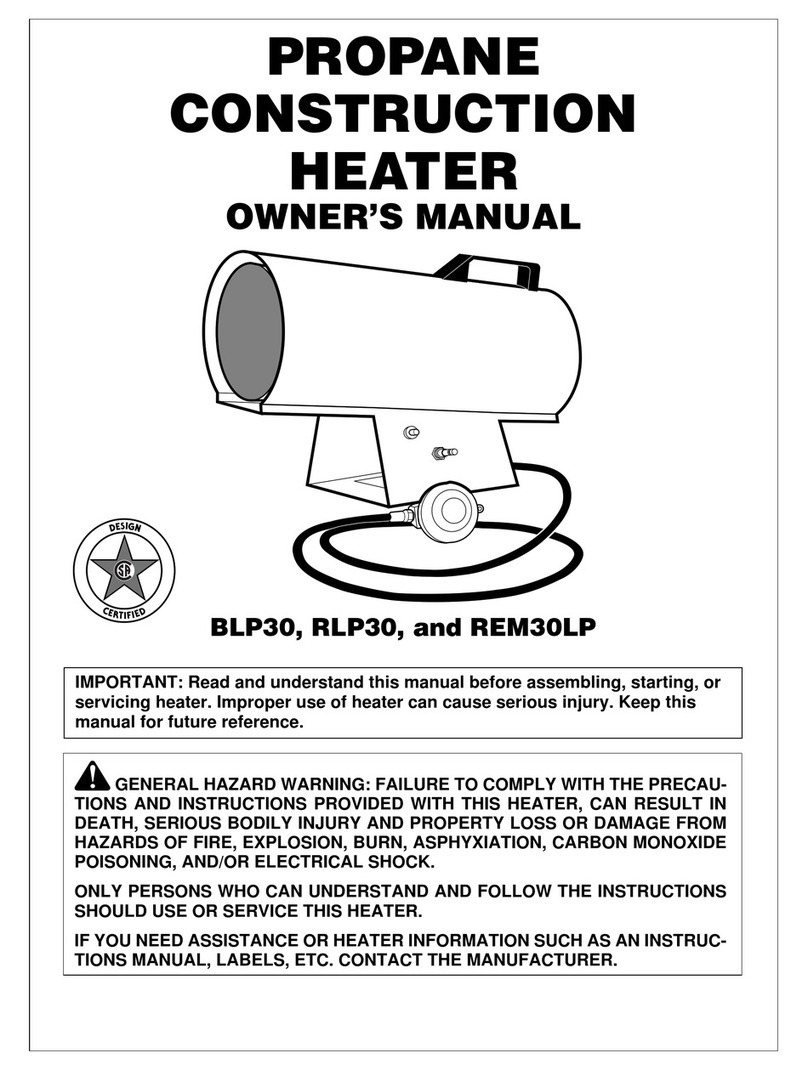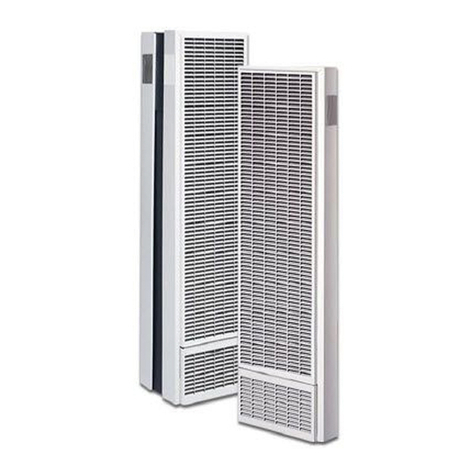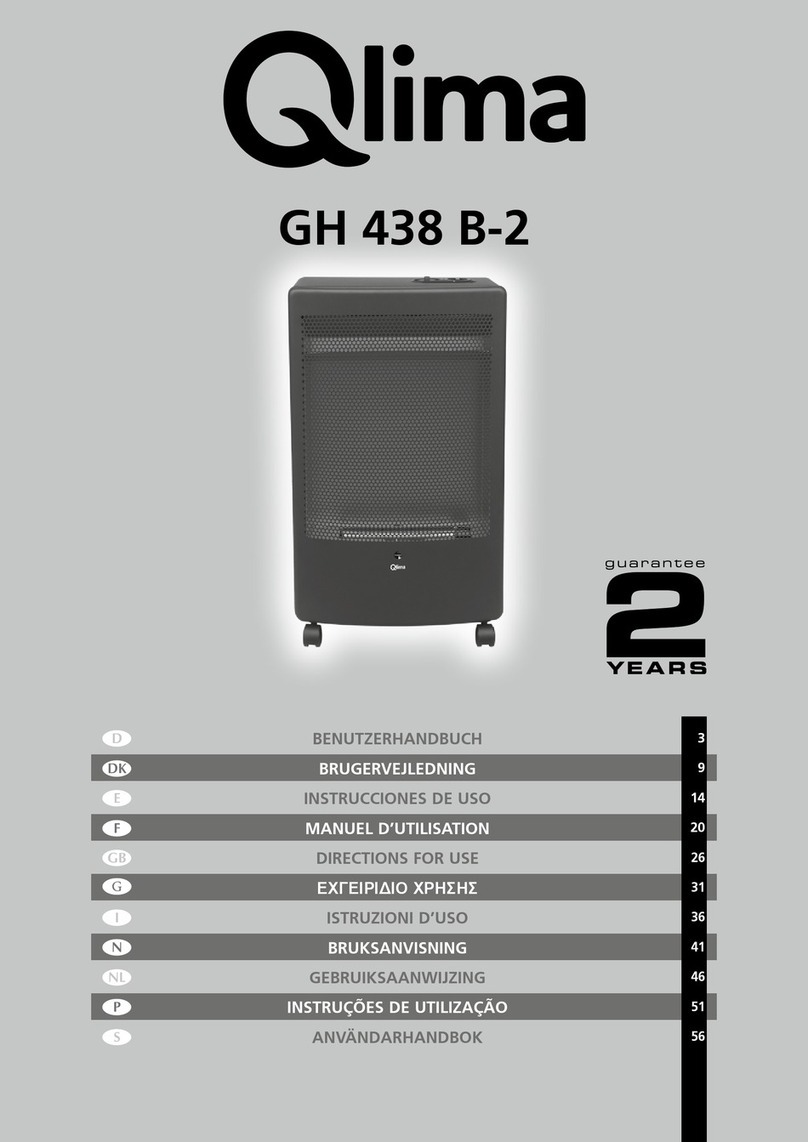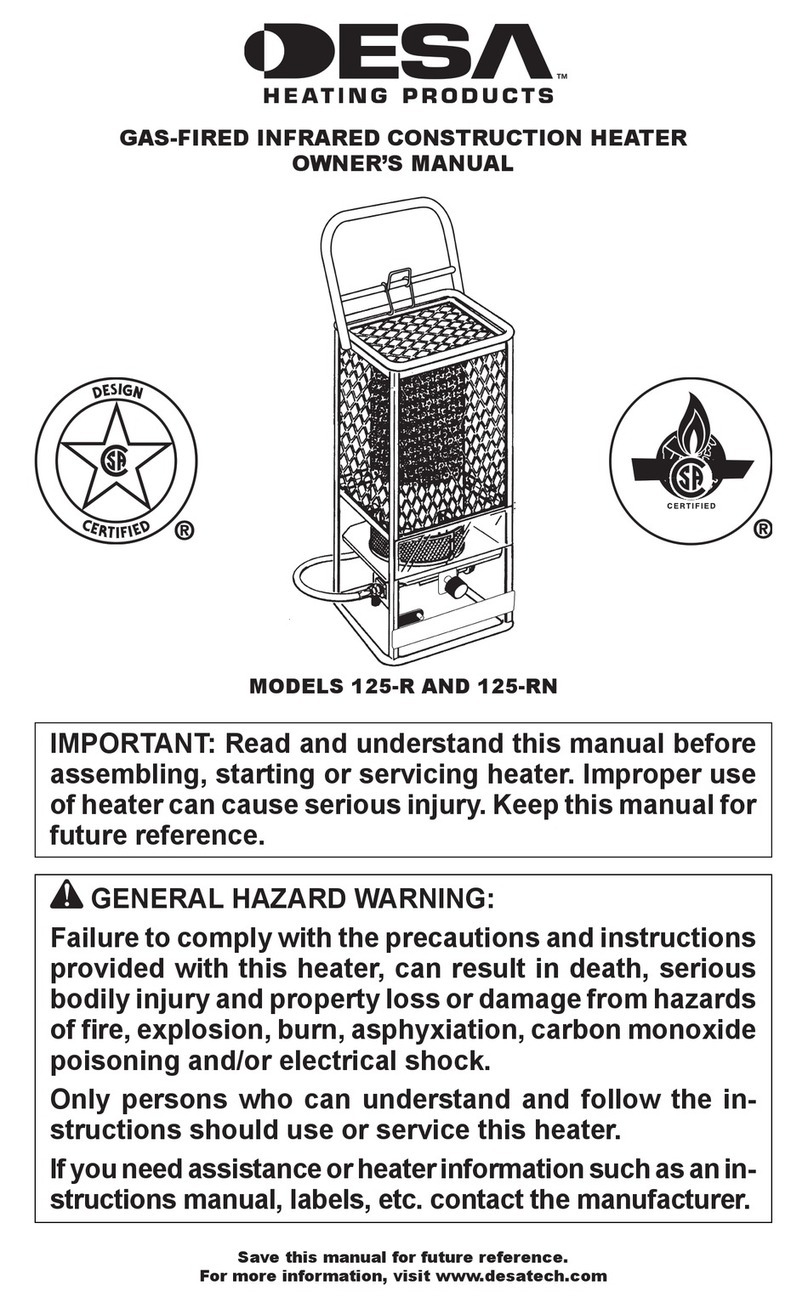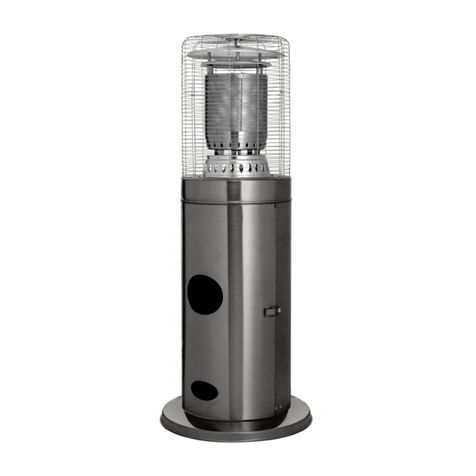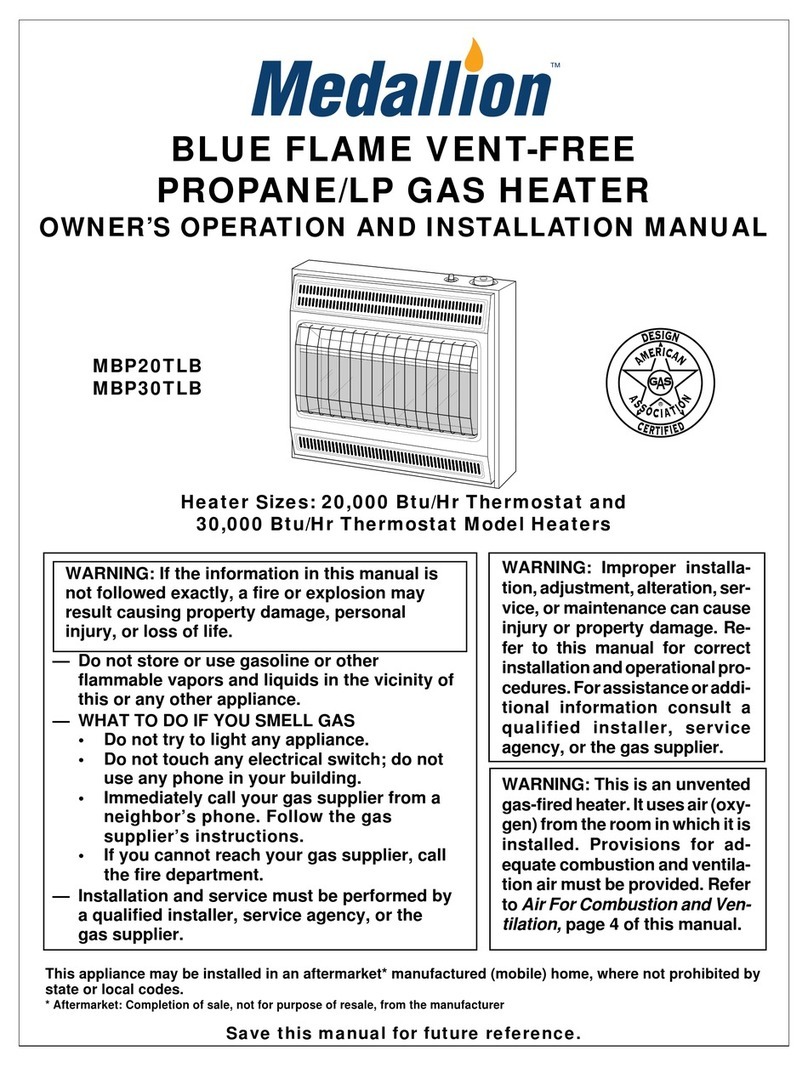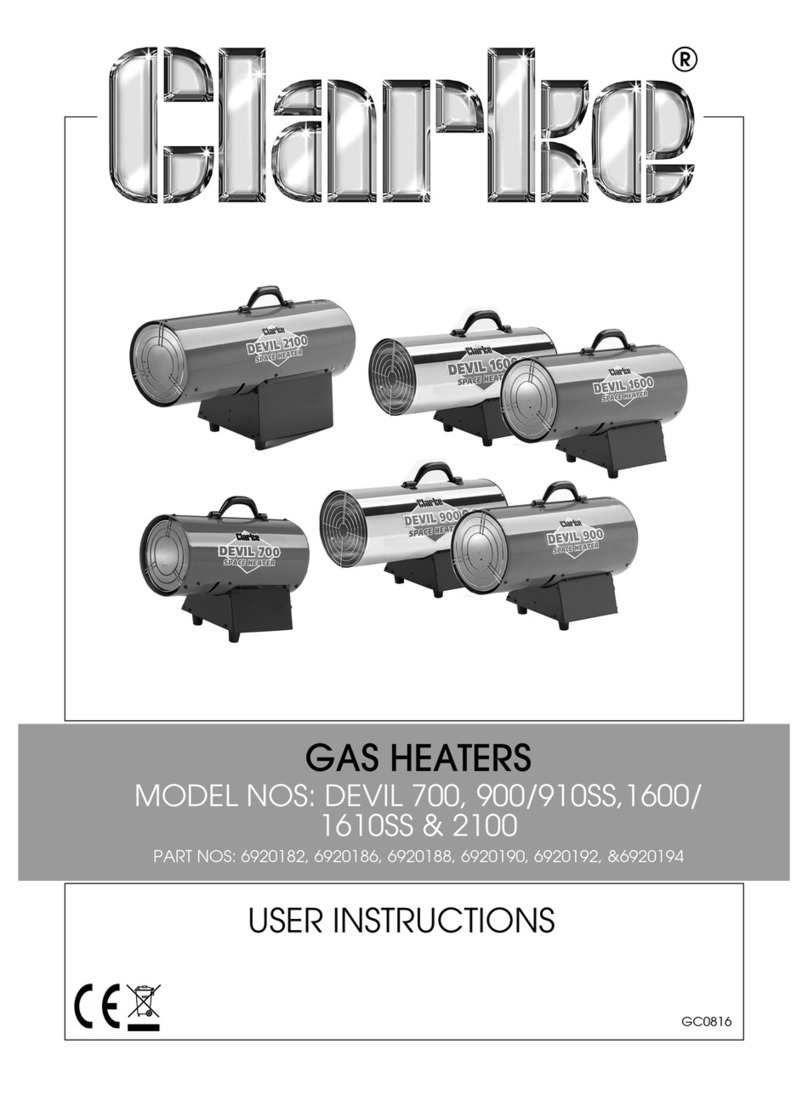Page 5
SLX 09.00
RIDDLING
Riddling twice a day is usually sufficient.
The fire should be riddled with all doors shut. Place the tool
on theknob and rotate between the horizontal and the 45°
position several times as shown in Fig. 2.
Caution: when riddling the grate usingsolid fuel do not go
beyond the 45° position as this can cause the grate to jam.
If jamming does occur then the fire should be allowed to
burn for approximately half an hour before riddling the
grate again as described above.
Too much riddling can result in emptying unburnt fuel into
the ashpan and should therefore be avoided. Clinker should
regularly be removed from the firebed.
After riddling, the grate should be put back into the solid
fuel position (the tool should be horizontal).
REFUELLING
Keep the firebox well filled (the fuel may be sloped up from
the front firebars), but do not allow fuel to spill over the
top of the front fire bars. Take care that fuel does not
project over the front fire bars or damage to the glass may
be caused when the doors are closed.
OVERNIGHT BURNING
Empty the ashpan, if necessary, and then riddle the fire. If
the fire is very low then it may be necessary to add a little
fuel and turn the thermostat control up to maximum for a
brief period until the fire is burning brightly before filling
with fuel.
If the central heating pump is off overnight then the
thermostat may be left at the same setting for both day and
night operation. If the central heating pump is on overnight
then set the thermostat control to give the required level of
heating.
Some experimentation may be necessary to find the setting
most suitable for the particular fuel used and the drawon
the chimney.
For overnight burning the fire doors must be closed.
To revive the fire, empty the ashpan if necessary, riddle,
and turn the thermostat control knob to maximum. When
the fire is burning well load on more fuel as necessary and
turn the control knob to the desired setting.
THROAT PLATE AND FLUEWAY
CLEANING
It is important that the throat plate and all the appliance
flueways are kept clean. When burning smokeless fuels
they should be cleaned at least monthly and more
frequently if it is foundnecessary
The throat plate and flueways may be cleaned with a low
fire still burning. Use the scraper tool to scrape any sooty
deposits off the front of the plate until they fall into the fire.
Also scrape any soot deposits from the sides and top of the
firebox. Ensure that soot deposits are not allowed to build
up on the sides because if the throat plate becomes tight
between the faces this can cause it to fail prematurely.
More soot will be deposited on the throat plate and in the
flueways if the appliance is run at low levels for long
periods. If this is the case then more frequent cleaning will
be necessary.
SPECIAL POINTS WHEN BURNING
COAL
When loading the appliance take care not to smother the
fire, instead fill the firebox in two stages waiting between
each stage for the flames to appear above the fire.
After a period of slumbering always turn the air control up
to maximum and wait until flames appear above the fuel
bed before opening the doors.
Burning coal will produce more soot deposits than other
fuels, especially if the fire is run at low levels for long
periods. It is therefore vital to clean the throat plate
regularly, daily cleaning is recommended.
MAINTENANCE
Cleaning
The appliance is finished in vitreous enamel. To clean the
surfaces simply wipe over with a dry cloth. Abrasive pads
and scouring cleaners must not be used as these will
damage the finish. Care should be taken not to knock the
enamel with hard objects as it will chip.
Cleaning the Glass
The glass in the doors is a special ceramic glass which is able
to withstand high temperatures. Before cleaning the glass
open the doors and allow them to cool. Clean the glass
using a damp cloth and then wiping over with a dry cloth.
Any stubborn deposits on the glass may be removed with a
proprietary stove glass cleaner or ceramic hob cleaner.
Some deposits on the glass may be burnt off simply by
running the fire at a fast ratefor a few minutes. Do not use
abrasive cleaners or pads as these can scratch the surface
which will weaken the glass and cause premature failure.
Aerosol spray cleaners should not be used near the
appliance whilst it is under fire.
When not in use
If the fire is going to be out of use for a long period, (for
instance in the summer,) then to prevent condensation, and
hence corrosion, the thermostat should be left at the
maximum setting and the main doors left ajar. It is also
advisable to sweep the chimney and clean out the fire.
Spraying the inside of the doors and firebox with a light oil,
such as WD40, will also help to keep all internal parts

